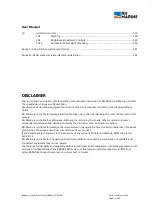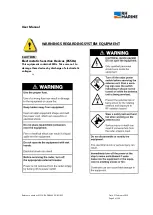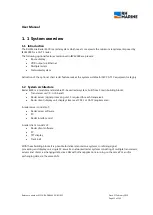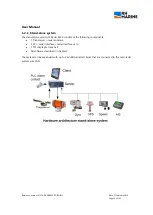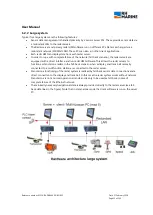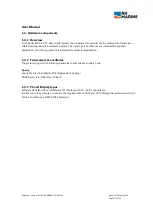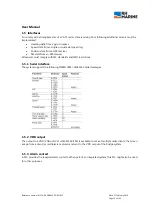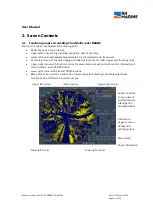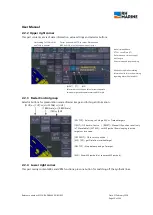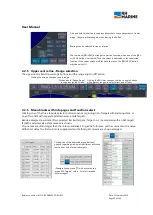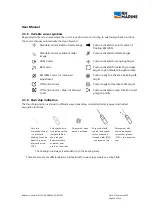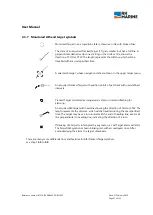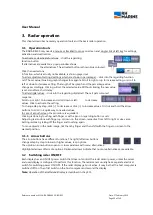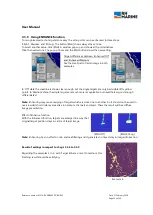
User Manual
Reference number: 4111A-RADAR4600-GBD-R1.1
Date: 27 February 2018
Page 21 of 149
2.2.8
Route display and information
Downside at right corner of display), route information with different actual steering data are shown, and
provided that a route- or waypoint- navigation is active and
regarding data are received:
XTD:
perpendicular distance to course line
(Offset distance)
CTS:
bearing to next waypoint
TTG:
arrival time at next waypoint (based on actual SOG)
RNG: actual remaining distance to next waypoint.
Route legs and waypoints also can be called up into radar image.
2.2.9
Colours of screen contents
To make different parts of screen contents better visible, various background colours are used. Additional to
adapt to surrounding light conditions, three basic colour configurations and brightness levels are selectable:
‘DAY’, ‘DUSK’ and ‘NIGHT’.
The included examples are screen shots in ‘DAY’ mode. Following examples are screen shots in ‘DUSK’
mode, which has more visible colour discrimination. Presentation of ‘NIGHT’ mode is similar, but much more
dimmed.
The background of radar image is blue (black in later versions).
Radar targets are yellow with different steps of brightness, depending on strength of
received signal.
Other parts of screen are more or less in dark grey or grey-blue.
Data which are computed by the RADAR 4600 Radar System with
regarding notes are shown in white or light grey.
Data and regarding notes received from external systems are shown in accordance
to IEC62288, coloured as follows:
green,
- in case they are safety and valid (blue in later versions)
yellow,
- in case they may be not reliable (a manual entered speed value, for example).
red,
- if data contains invalid information.
If no data is received, some red dashes are shown instead.
The colour "yellow" is used to mark data with low integrity. Beside
example indicates that not enough time elapsed since start of radar
transmission to provide trail images with the set time. As soon the set
time (6 min) has elapsed, the indication changes to white
Note:
- Warnings are shown in yellow.
- Alarm situations are shown red flashing, resp. steady red when acknowledged.

